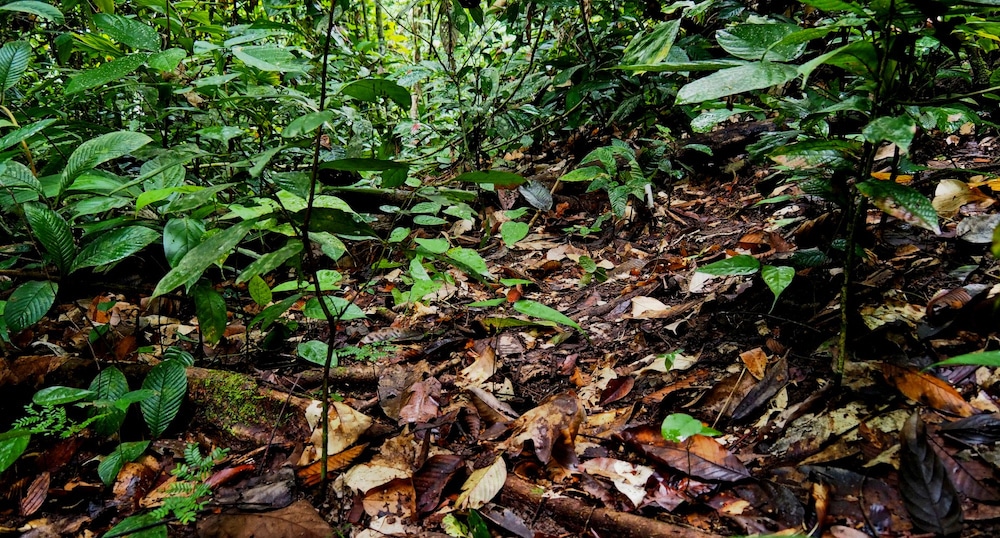
According to a new study, the survival rate of rainforest seedlings is higher in natural forests than those that have been logged — even three decades following tree restoration projects.
An international team of researchers led by the United Kingdom’s University of Exeter tracked more than 5,000 seedlings in the Danum Valley Conservation Area and surrounding Ulu Segama landscape in North Borneo for one-and-a-half years, a press release from University of Exeter said.
The landscape contained natural forest as well as areas that had been logged 30 years earlier. Some had been restored with tree planting and other methods, while others were recovering naturally.
“Our findings suggest that seedlings are experiencing stress in logged forests. This could be due to changes to the canopy structure, microclimate and soil, with current restoration treatments insufficient to eliminate this stress. In particular, highly specialised species seem to struggle to survive, leaving communities with reduced species diversity compared to intact forest,” said Dr. David Bartholomew, who was based at University of Exeter while conducting the study and is now with Botanic Gardens Conservation International, in the press release.

Logged forests have reduced seedling density, reducing the probability for the next generation to emerge. David Bartholomew
Across the study region, a “mass fruiting” had been triggered by drought. It caused trees to drop their fruit all at once, followed by the emergence of new seedlings.
Early on, both the restored forest and the natural forest had relatively high seedling numbers in comparison with a forest recovering naturally from logging, which suggested fruit production was enhanced by restoration activities.
But seedlings in the restored forest had low survival rates. By the time the study was finished, the naturally recovering forest as well as the restored forest had similarly low seedling numbers. In the natural forest, however, seedling populations stayed higher.
The results demonstrated that forest regeneration may be affected by various factors contingent upon the restoration approach. For example, seedling survival in areas where planted trees have reached maturity and seed availability in sites that are naturally recovering from logging. The variations could have longer-term effects on how forests are able to perform carbon sequestration and other important ecosystem services.
“We were surprised to see restoration sites having lower seedling survival. After such a productive fruiting event in the restored forest, it’s disappointing that so few were able to survive – and to think what this might mean for the long-term recovery of different tree species,” said Dr. Robin Hayward, who conducted the research while pursuing a Ph.D. at the University of Stirling, according to the press release.
Even though it has been shown that restoration benefits biomass accumulation, the findings indicated that it is not yet enabling the full establishment of next-generation seedlings.
“Rainforests are complex systems and there are many possible explanations for our results. For example, animals that eat seeds – like bearded pigs – may be drawn into restored forest patches to eat the more abundant seeds and seedlings, rather than moving into adjacent poor-quality logged forest. In natural forests, animals potentially move more freely and so do not exhaust seed supplies in the same way,” said Daisy Dent of ETH Zürich and the Smithsonian Tropical Research Institute in Panama, in the press release.
Selective logging is widespread throughout the tropics, but long-term forest recovery is essential to the maintenance of high biodiversity and carbon stocks. Low seedling survival rates three decades later raise concerns about possible regeneration failure in future tree generations.
“Together, these results reveal there may be bottlenecks in recovery of particular elements of the plant community. We are now progressing this research into the various stages of the regeneration process – fruiting, germination, establishment and causes of mortality – to help understand which mechanisms are driving the patterns we have observed and how we can better assist forest regeneration and support the long-term sustainability of degraded forests,” said Dr. Lindsay F. Banin of the UK’s Centre for Ecology & Hydrology, in the press release.
The study, “Bornean tropical forests recovering from logging at risk of regeneration failure,” was published in the journal Global Change Biology.
It draws attention to the urgency of careful design, adaptive management and monitoring of restoration projects to ensure they are able to recover long-term biomass carbon and biodiversity. This is essential to meeting global targets like those set forth in the United Nations Decade on Ecosystem Restoration and the Kunming-Montréal Global Biodiversity Framework.
Traits and characteristics in plants that determine plant functionality could be the answer to understanding low seedling survival rate, as they can show which resources plants are having a difficult time accessing.
The study found differing plant traits in intact forests and logged areas, which indicated that certain species may be having a hard time surviving in areas that have been disturbed, and some must adapt the way they grow. This could affect ecological functioning and biodiversity in the long-term.
“This study captures just 18 months after one fruiting event. Longer-term research is required to understand the full effects of historic disturbance, and how to enhance seedling survival,” the press release said. “Here, intact forests are dominated by a tree family, the Dipterocarpaceae, which along with many other tree families, fruits in large inter-annual episodes known as masting events. These cyclical events have important cascading effects on food availability for animal species.”
The post Rainforest Seedlings Grow Better in Natural Forests Than Restored Ones, Even After 30 Years, Study Finds appeared first on EcoWatch.
